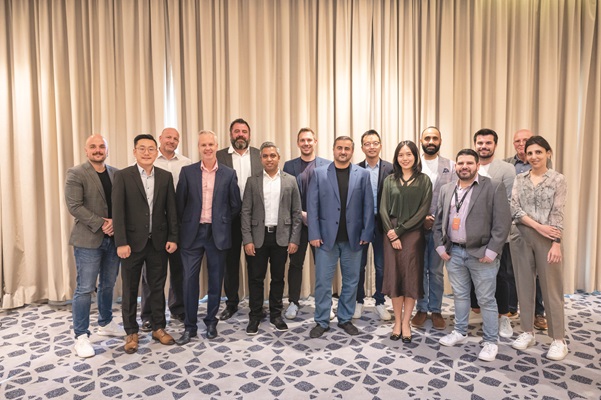Streaming services acknowledge that personalisation is the cornerstone of an enhanced entertainment experience. However, its efficacy hinges on a raft of factors that shape its success or failure. In a roundtable hosted by BroadcastPro ME and enterprise technology provider, BytePlus, regional experts gathered to talk about the personalisation journey within their respective organisations.
From recommendation engines running on single or multiple inputs to overwhelming amounts of data, and from personalisation to hyper-personalisation, targeted content is fundamental to operating platforms. To digitally engage audiences, profile segmentation becomes vital, obtained through navigating the arcane world of AI, data analytics and recommendation logic. ‘Because it understands me’ is the underlying reasoning behind customers staying on a streaming platform; therefore, curated content contributes greatly to longer stay times.

BroadcastPro Middle East, in conjunction with BytePlus, brought together a group of industry professionals last month to understand the impact and influence of hyper-personalisation, harnessing and leveraging data, innovations in AI, and engagement and conversion to play. Chaired by Hasnain Gilani of BytePlus, the expert table consisted of Faraz Arshad, CTO, StarzPlay; David Jacobs, Senior Manager – TV & Entertainment Media, Etisalat UAE; Dominic Farrell, CTO, Shahid; Jonathan Haysom, Vice President Home + Digital Entertainment, Etisalat by e&; Ryan Restell, VP Growth and Strategy, OSN+; William Sharp, CTO, Intigral; Sami Tabchouri, Strategist, blinx; Peter Van Dam, COO, Saudi Pro League Media House; Mais Halaseh, Director, Product Management, Weyyak by Zee Entertainment; and Hazel Wei, Product Manager, BytePlus.
With personalisation playing a big role in dictating customer churn, Gilani asked where each company stood in their personalisation journey and what processes were in place to drive it further.

There are multiple facets to personalisation, but it all begins and ends with content, said Dominic Farrell, CTO of Shahid, one of the region’s leading streaming platforms.
“Content is incredibly important because it drives relevance, which is one of the key KPIs in the content business. Relevance drives consumption, which leads to customer satisfaction. This reduces churn. So when someone comes to your platform, how relevant is the content you’re showing them? How much do they want to consume it? This is where personalisation comes in. One of the big challenges with personalisation is that it is very reliant on the breadth and depth of your content catalogue. If you spend a lot of money on AI and machine learning algorithms but do not have the breadth and depth of content, you will end up serving people the same content.”

Running a platform across the MENA region also means one cannot broad-brush the number of languages and dialects, he continued. “We looked at geofencing trends, which is a basic form of recommendation but one with the most success. So essentially, what’s trending in Saudi? What’s trending in Egypt and what’s trending in the UAE? It is equally about the cadence of content on the platform. How often are you bringing new content? Because a lot of people tend to watch the latest releases, although geo-fencing has been the most successful for us.”
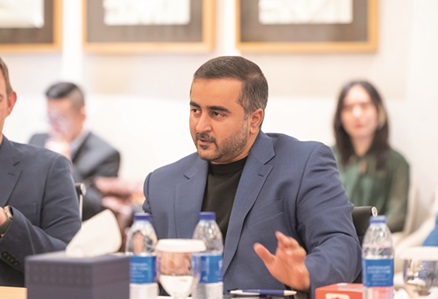
StarzPlay CTO Faraz Arshad agreed, adding that for instance serving cricket in Egypt, where football is the most watched game, would result in churn. Offering context, he commented that StarzPlay began with an off-the-shelf recommendation engine six or seven years back but discovered its editors offered better curation. One big challenge with automated recommendation engines is that “we don’t give them the time they require to evolve with your consumption metrics and discover the patterns across countries and regions”.
Today, the streaming service has adopted “a hybrid personalisation approach where we do the things we are best at, and adopt multiple recommendation providers to embed their recommendations as well into our existing layouts, whether it’s by country, context, time-based, etc, including flipping the carousel … Our current strategy involves around 80% dynamically driven recommendations. with 20% room for editorial curations.”
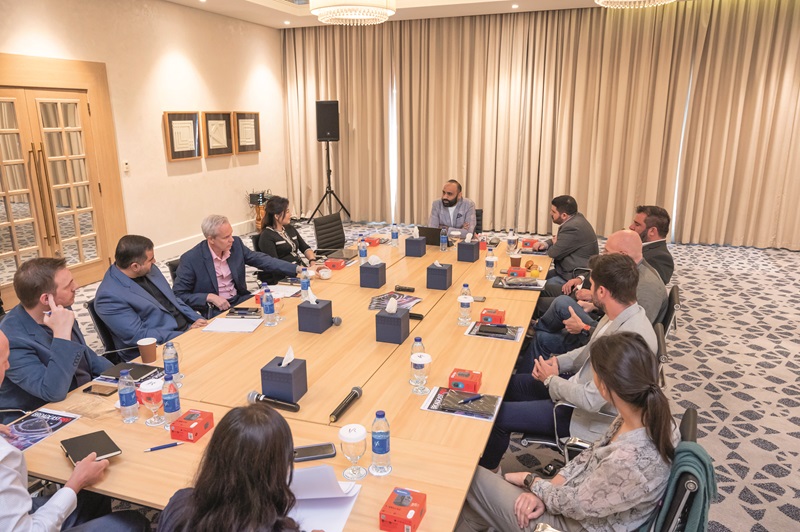 For e&, which caters to a much broader viewer base across the UAE as the leading telco in the country, the challenges and opportunities can be many, noted Jonathan Haysom of Etisalat by e&.
For e&, which caters to a much broader viewer base across the UAE as the leading telco in the country, the challenges and opportunities can be many, noted Jonathan Haysom of Etisalat by e&.
“With a viewership reflecting the diverse mix of ethnicities in the UAE, the dynamics posed to systems built for countries or operators with a much less diverse subscriber base means tuning and customisation is required. Trying to ensure the best fit for recommendation relevancy for someone who is not from the subcontinent diaspora can challenge systems and platforms that don’t allow flexibility or a proper ‘segment of one’ view. When it comes to content, we also use these systems to have a better understanding of what is important for us to have on the platform. If there are common traits or threads we can see, we leverage that insight to promote and surface that content properly. It’s also extensively used for tuning our content catalogue.”

“Paving the way towards customer segmentation?” prompted Gilani.
“Exactly, segmentation is key to how we market,” said Haysom. “We may not be using ML modelling at the scale I think we could just yet, but we inherently use it to ensure we onboard or pitch relevant content at relevant times to our customers.”
For David Jacobs of e&, that leads to customers seeing series and movies in the catalogue that they haven’t yet discovered themselves organically – less of ‘one to many’ and more of ‘one on one’ is the recommendation model he is hoping to evolve further. “It’s easy to push more Arabic series to somebody who already watches Arabic series. I want my engine to know who’s in front of the TV even when they haven’t set up their profile, kind of taking it to the next level. I think that’s where we need to move to.”
Echoing these sentiments, Ryan Restell of OSN also touted third-party recommendation engines for in-app personalisation. “We’re focusing on touchpoint personalisation this year, and we have seen that when we personalise from day one, our cancellations in the first month are much lower than when we have a blanket page that everyone sees.”
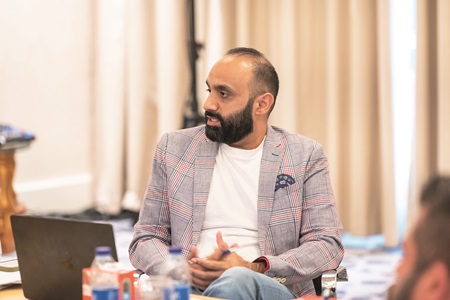
Focusing on AVOD content, Mais Halaseh of Weyyak by Zee Entertainment had a slightly different outlook. “We have a mix between geo-fencing in addition to recommendations based on genres, sub-genres, original language and editorial curation,” she explained. “Because we cater to guest, registered and subscribed users, we are able to provide more accurate recommendations for both registered and subscribed users, as we collect data based on their behaviour and viewing history.”
Bringing the outsider view, Peter Van Dam of SPL Media House said it was in their mandate to make sure people around the world see the SPL and the Women’s League. “We personalise content. AI is important when we make segments for different platforms and partners to give unique highlights during league games.”
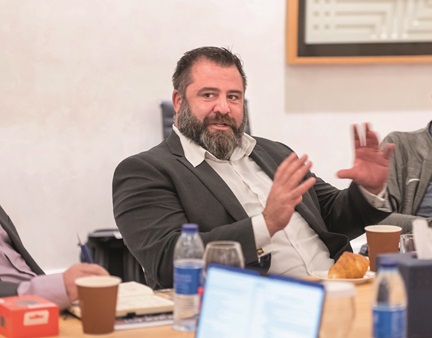
Intigral CTO William Sharp explained that recommendation engines do not solve all problems. “Lacking the toolkit to manage the platform correctly, we tried to build our own engine with basic geography and genre-based viewership. We also facilitate our UI to bring meaningful results back to content marketing, to make informed decisions. The challenge is to integrate and ingest third parties’ and suppliers’ content and to recommend the best there. We need a solution to pull that metadata out and then have a way to pre-moderate it.”
Sami Tabchouri of digital storytelling hub blinx, which primarily operates on social media platforms, remarked: “We have built a tech stack that we apply to identify behavioural patterns with the aim to put the best kind of content in front of the right audience at the right time. We have also capitalised on AI and extended reality in our content to create something visually unique and appealing for our users.”
Quantifiability of watch time and conversion to play is important for optimising business. The challenge is retention — if the churn is reducing over time, you are engaging people better. Creating content requires strategy, time and approval.
“It’s important to know who’s watching where, when and how – real-time data uplifts the experience,” said Van Dam.

Jacobs added: “Whether it be reach or stay time, at some point translation to revenue is important.”
To measure effectiveness, the core metric is conversion to play. “Unless you have an extremely advanced algorithm, it’s only as good as the metadata fed into it,” Farrell pointed out.
With the pain points of recommendation engines and their effectiveness discussed, Hazel Wei of BytePlus opened the second half of the discussion by addressing some of the complexities.
Good infrastructural support is key to any successful recommendation engine, she began. “When we discuss recommendation, we are trying to match billions of content to one user.” Resource usage, speed and accuracy are paramount to calculating the probability of a user clicking ‘like’. “Engagement, on the other hand, is the harder part of recommendation, because it involves a chain of events that you presuppose a user participates in, such as clicking, sharing, leaving a comment, etc.”

User profiling, content profiling and flexibility are meaningful for the engine to learn and update in real time to create an impactful user profile. The search query, IP address and location are all very important for relevance. “If it’s close to me I feel more related to the content, tying back into Dominic’s point around geo-fencing and targeted content.”
Guest profiles are equally significant when you only have a cookie to rely on, making some amount of mapping essential. The need for content profiling and metadata tagging for onboarding third-party content is a bit like labelling, Wei explained.
“In terms of actual profiling and collaborative filtering, the top 10 trends are very important. For cross-selling, because ads essentially impact the user experience, less is more in a way. All this needs to get done in quick time, and that’s why AI is so useful. AI is about uplift and so the infrastructure and framework become very important.”

Managing strategies to enhance watch time for less popular content is done to “incentivise the click-in”, Wei went on. As for the mean scale, it is adjusted flexibly according to different business tolerances for diversification, event view rates, tail content and so on. “Similarly for post-processing and pre-processing, the whole API is very customised to allow flexibility as and when needed.”
Using the interactive experience social media offers, and with shorts and reels changing the nature of apps, managing to integrate with any of the platforms is shifting the nature of operations. Curated content can be uploaded, with the option of watermarking and showing the company name or product. With moderation being key, strategising becomes tricky.
“There is AI in moderation, but I don’t believe there’s anything trained to the cultures and values of the Middle East,” remarked Sharp. “We want as many views as we can, we want people to upload it to the platform easily, but how do we manage that? And then it comes back to your trusted influencers, where you have a level of verification, and then you need some level of moderation.”

Moderation in AI is an interesting one, but the compute power and timeliness aren’t there yet. “There are different ways we can be compliant to local needs, but AI and ML disruption in this space is still nascent,” commented Haysom. “In other parts of the world, where these tools are seeing some early adoption, they’re being tuned on data points and learning from footage that represents that particular local population mix and its censorship or sensitivity requirements, so it’s a little more accurate for those regions. Getting those basic needs tuned for this region is very important before they can be used with confidence.”
Recommendation infrastructure demands a model that can drive the right kind of traffic. It depends on the amount of investment and where operators wish to aim their internal tech resources. With varying ideas on transition challenges, Al Halaseh said that Weyyak had its own internal recommendations because of iteration “when you don’t have Arabic speakers working on the recommendation engine outside”.
For everyone else, the challenge is to identify the optimal path toward a metric that combines hybrid hyperscaling and hyper-personalisation. Essentially, all are looking to streamline the user experience, helping to minimise the steps from powering on to playback and ensuring that the relevance resonates with the end customer.
Everybody has the same business challenge, “but the difference is the ways in which it is nuanced in content creation, OTT, apps, TV services and IPTV”, remarked Jacobs.
Presenting accurate recommendations is critical, with multiple services and ways to adapt to aggregate content. To offer the right content, everyone is looking for the best solutions and there’s room for collaboration. “Ninety-eight zettabytes of content are consumed globally, daily,” commented Tabchouri. “That’s one followed by 21 zeros! So the pie is pretty big and in order to win in the content space today, collaboration among creators and entities is key.”
The appetite for content consumption is huge, and as operators come together to add value, the industry can only grow.


































































